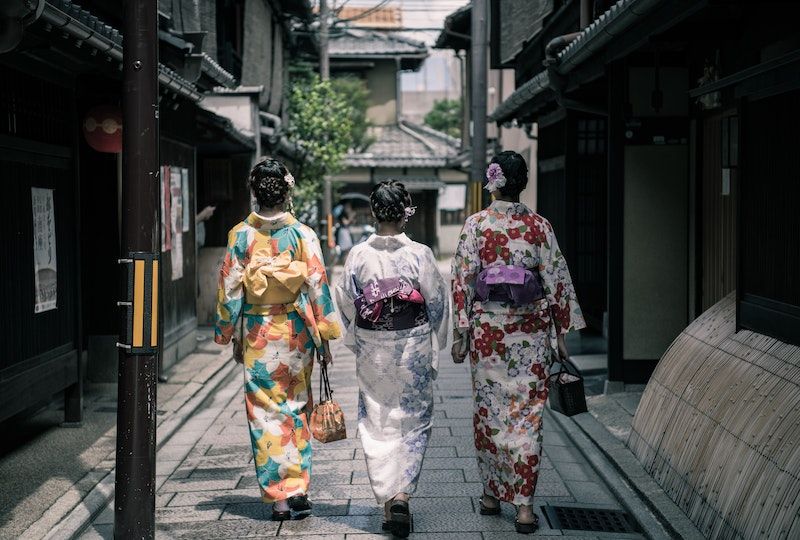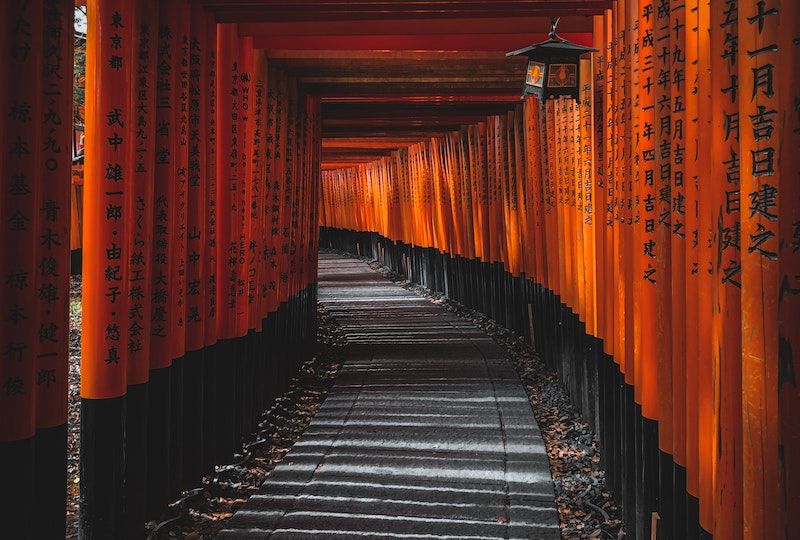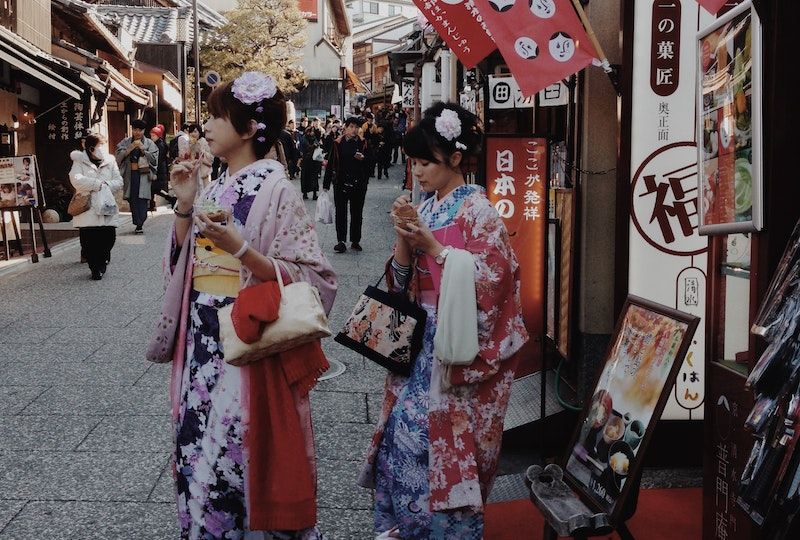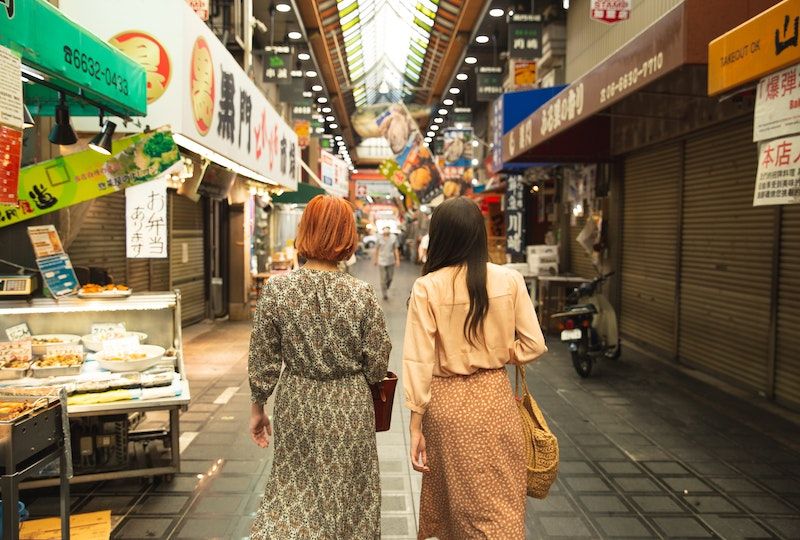The Top Kansai Dialect Phrases to Use in Kyoto Japan

If you have the opportunity to visit Kyoto Japan, you want to make the most of it! With its unique history and beautifully blossoming narrow streets, Kyoto Japan is one of the most sought-after travel destinations out there. As a Japanese language learner, being able to spark little conversations with natives in their language dialect can make your Japan travel even more fulfilling. However, even if you’ve been working hard to learn Japanese, you may find yourself blindsided by the Kansai dialect of Kyoto Japan.
The Kansai region, where the Kansai dialect, or Kansai-Ben, is spoken, includes a lot of great destinations for Japan travel. It encompasses not only Japan's former capital and cultural seat, Kyoto, but also the uber-modern Osaka and Nara with its historic buildings and famously friendly deer. In fact, over 50% of visitors to Japan travel heading to the Kansai region, and there are also many TV shows, manga, and Japanese series set in this area.
Even though I speak pretty advanced Japanese, I have found myself confused by Kansai dialect before; it’s a bit like learning American English and then trying to chat with someone from Scotland. So, if you’re hoping to use your newfound Japanese skills while you travel, it might be important to learn some Kansai dialect phrases.This article will guide you through some of the most popular Kansai dialect phrases you should know before visiting Kyoto Japan.

What Is The Kansai Dialect?
There is no consensus as to how many Japanese dialects are currently in use. Most believe there are 47 Japanese dialects (perhaps because there are 47 prefectures in Japan), while others think there are only 16 dialects throughout the country. However, the general consensus is that Japanese can be divided into four major groups: Eastern Japanese dialect, Western Japanese dialect, Kyushu dialect, and Hachijo dialect.
The Kansai dialect falls under the Western Japanese dialect. You’ll hear it in the Kansai region of Japan, which includes 6 of the 47 prefectures of Japan: Osaka, Kyoto, Hyogo, Nara, Wakayama, and Shiga. The Kansai dialect is, like I mentioned, noticeably different from what you’re used to. It’s known for its distinctive pronunciation, vocabulary, and grammar. Some of its most characteristic features include:
The use of the verb “oru” instead of “iru” for the verb “to be.” For example, this is how you say “I am here” in both dialects,
General Japanese: ここにいます (Koko ni imasu)
Kansai Dialect: ここにおるわ (Koko ni oru wa)
The use of the particle “meh” instead of “nan” for questions. Here’s “What’s that?” in both dialects.
General Japanese: それは何ですか?" (Sore wa nan desu ka?)
Kansai Dialect: それは何やめ? (Sore naniyame?)
The use of the word “miyo” instead of “desu” to express politeness. For example, here’s how to say, “I will go.”
General Japanese: 行きます (Ikimasu)
Kansai Dialect: 行きみよ (Ikimiyo)
The Kansai dialect is also known for using onomatopoeia (words that sound like sounds, like boom and clang; these words are popular throughout Japan) and other expressive language. Here are some phrases that will serve you well as you travel Japan’s Kansai region.

The Top Kansai Dialect Phrases when You Travel Japan
Here are the top 5 popular Kansai phrases you’re sure to encounter as you travel Japan.
Greetings in Kansai Dialect
Greetings are one of the best ways to initiate a conversation on Japan travels. As you travel Japan’s Kansai region, you can greet people by saying: “こんにちは(Konnichiha)” OR “まいど(Maido)”
- こんにちは(Konnichiha) - means “hello”
You may notice something familiar about this one, but there’s a slight difference. It’s pronounced こんにちは (KonnichiWA) in standard Japanese. In Kansai dialect, there’s a slight “h” sound instead. This is a characteristic feature of the Kansai dialect, known for its relaxed and casual pronunciation.
- まいど(Maido) - Means a variety of things, including “Good Afternoon”
The most common way to say “good afternoon” in Kansai Japanese is まいど (maidou). This one doesn’t really have an equivalent in standard Japanese. まいど is a versatile word that can be used in a variety of contexts, such as when you are meeting someone for the first time, when you are parting ways, or when you are thanking someone.
Appreciation in Kansai Dialect
Speaking of thanking someone, in Kansai dialect, you can say “thank you” by saying the standard ありがとう(Arigato). However, you can also use a distinctive Kansai word.
おおきに(Okini)- Also “Thank you” in Kansai
This is a more informal way to say “thank you” than arigato. Imagine a nice driver that picked you up from the station, helped you with luggage in the hotel, and then offered to take you to an exciting spot. By the end of all that, you want to express your appreciation more informally, since you have some rapport with the person. Okini may be a good choice/
If you want to make it into a longer phrase, here are some examples
おおきに、助かりました。 (Okini, tasukemashita.) - Thank you; you helped me.
おおきに、ごちそうさまでした。 (Okini, gochisousama deshita.) - Thank you for the meal.
おおきに、またね。 (Okini, mata ne.) - Thank you, see you later.
Apologies in Kansai Dialect
You might also need to make excuses as you travel Japan. For instance, you should be able to say “excuse me” if someone is on your way along one of Kyoto Japan’s characteristically narrow streets. Or say you’re talking to someone and need to pick up your phone. Knowing how to say “excuse me” prevents you from offending anyone.
You can use the standard Sumimasen (すみません) in Kyoto. This is a standard Japanese phrase for "excuse me." However, there’s another version typical to the region: myoh (みょう). This is a Kansai dialect word that means "indeed" or "that's right." It is used similarly to the Japanese word desu (です), but it is considered to be more casual.

Kansai Dialect Phrases You’ll Hear in Shops
You’ll definitely want to visit shops while on a tour or traveling. You can't go home without souvenirs for your kids, siblings, or partner! But the quality of the help you can get in a shop depends on how well the shopkeeper understands you. The following phrases will help you:
1. なんぼ(nanbo)→ “how much”
This is a more casual way to ask “how much” than the standard Japanese word ikura (いくら). The “bo” is a Kansai dialect suffix often added to words to make them more casual.
2. 似おてる(nioteru)→ “to resemble” or “to look similar”
This is a more casual way to say “resemble” or “look similar” than the standard Japanese word niteiru (似ている). Like “bo,” The “teru” sound at the end of a note is a Kansai dialect suffix often added to verbs to make them more casual. You can also hear it in a context where it means “It suits you.”
3. 突き出し (tsukidashi) → “free appetizer”
A tsukidashi is a small, free dish served at the beginning of your meal. When you are on your next Japan travel, look out for tsukidashi in Osaka and Kyoto. In these regions, it is common practice for restaurants to serve tsukidashi to customers to welcome them and introduce them to the restaurant’s cuisine.
You might get a small dish of pickled vegetables or tofu, but it can also be a more substantial dish, such as a small bowl of noodles or rice. It’s sort of like the free bread and oil or chips and salsa you sometimes get at restaurants in the US. The word “tsukidashi” is derived from the Japanese word tsukidasu (突き出す), which means “to slide out,” like the dish sliding over your table.
Kansai Dialect Slang
Here’s the part you might not get if you cover Kansai dialect in Japanese class. Japanese is full of slang, but here’s some you’ll encounter in the Kansai region specifically.
| Slang | Meaning | Context/Example |
|---|---|---|
| どない (Donai) | What's up? | A casual way to ask someone how they are doing. |
| ほんま (Honma) | Real, True, Genuine (Really?) | A way to express surprise or disbelief. 「それ ほんま?!」 “Sore honma?!” (Is that true?!) |
| かまへん Kamahen |
I don’t mind, It’s no problem | 「かまへん、かまへん!」 “Kamahen, kamahen!” (I really don’t mind!) |
| ぼちぼち (Bochi-bochi) | So-so, Not bad, Alright | When someone asks how you have been. 「ぼちぼちでんな。」 “Bochi-bochi denna” (Not too bad) |
| せやね (Seyane) | That's right | A way to express agreement or understanding. |
| ようけ ぎょうさん (Youke, Gyousan) |
A lot | 「ぎょうさん(ようけ)食べたわ。」 “Gyosan (youke) tabeta wa” (I ate a lot) |
Travel Japan with Great Kansai Dialect Pronunciation
Before you visit Kyoto Japan, it’s time to practice your pronunciation! It’s always really awkward for me when Japanese language learners try to speak Japanese to me, but I can’t understand them because their pronunciation needs a lot of work. Transitioning from understanding what to say to speaking it fluently in Kansai may not be effortless, but it is attainable! By combining resources online and traditional classroom learning, you can make mastering Kansai Japanese both possible and fun before you visit Kyoto Japan.
Using learning software like Speechling's online tools will place you above most tourists with little effort on your next Japan travel. Speechling's focus on fluid speech, dialect mastery via pronunciation exercises, and comprehensive articles on learning Japanese will help you get your point across even in Kansai dialect. So start practicing, and don't let language barriers hinder your exploration of Kyoto Japan's remarkable cultural experience!
